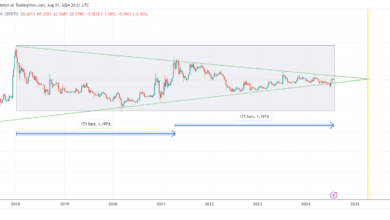Central Bank Digital Currency: Changshu Leads the Charge

Central Bank Digital Currency (CBDC) is rapidly emerging as a cornerstone of modern financial systems, with significant advancements being made in its adoption around the world. One of the most notable examples is the implementation of the E-Yuan in Changshu, a city in China that boasts a population of over 1.5 million. Beginning in May, officials will receive their salaries exclusively in this government digital currency, signaling a strong push towards CBDC adoption in daily transactions. With the backdrop of an extensive pilot project, Changshu is not just a local initiative but a testing ground for digital currency that could redefine finance as we know it. As digital currency in China continues to evolve, it raises critical questions about privacy, surveillance, and the future of traditional banking.
The rise of digital fiat currencies, often termed as government-backed digital currencies or CBDCs, is reshaping the landscape of monetary transactions globally. In the case of China’s E-Yuan, implemented in places like Changshu, we see an ambitious move towards digitizing national currency, aligning with the government’s broader financial strategy. This innovative approach to currency is not only about convenience but also the potential for enhanced control over financial systems and payment infrastructures. As similar initiatives gain momentum worldwide, the implications of widespread digital currency adoption—on privacy, efficiency, and financial autonomy—become increasingly important to discuss. Understanding these alternative terms and their impacts is crucial as we navigate the future of money.
The Changshu CBDC Pilot Project
Changshu is making headlines as the world’s largest pilot project for Central Bank Digital Currency (CBDC), showcasing China’s ambitious push to usher in a new era of digital finance. This city, strategically located just northwest of Shanghai, is set to implement the E-Yuan as the primary means of salary payment for government officials and employees. With over 1.5 million residents engaged in this pivotal transition, the Changshu CBDC initiative is not just a local experiment. It provides a blueprint for broader CBDC adoption across the nation, potentially influencing global trends in digital currency.
By transitioning to digital payments, Changshu aims to streamline economic operations and enhance transaction efficiency within its borders. The local government’s comprehensive plan involves integrating the E-Yuan into various payment systems, covering everything from public transport to utilities. By optimizing these infrastructures for the digital currency, Changshu positions itself at the forefront of China’s digital currency transformation and sets the stage for other cities to observe and potentially replicate this model.
Frequently Asked Questions
What is the E-Yuan and how does it relate to Central Bank Digital Currency (CBDC)?
The E-Yuan is China’s version of Central Bank Digital Currency (CBDC), designed to digitize the Renminbi. As part of its CBDC initiative, the E-Yuan enables digital transactions and aims to streamline government payments, such as salaries for officials in cities like Changshu, which is a leading pilot project for CBDC adoption.
How is Changshu contributing to the adoption of CBDCs?
Changshu is instrumental in the adoption of Central Bank Digital Currency (CBDC) by implementing the E-Yuan for salary payments to its officials. This initiative marks Changshu as the world’s largest testing ground for CBDCs, with plans to optimize various payment structures for the digital currency.
Are there any government incentives for using the E-Yuan as a digital currency in China?
Yes, the Chinese government offers several incentives to promote the use of the E-Yuan. Users can receive discounts on purchases, and during festive times, significant amounts of digital currency are distributed to encourage public acceptance of the CBDC.
What are the controversies surrounding the implementation of the E-Yuan and CBDCs?
Controversies surrounding the E-Yuan and CBDCs generally focus on concerns over government surveillance, financial control, and transparency. Critics argue that the introduction of a digital currency could trace digital transactions, limiting anonymity and increasing state power over personal finances.
How does the public perceive the E-Yuan and CBDC adoption in China?
Despite government efforts, public perception of the E-Yuan as a Central Bank Digital Currency (CBDC) remains skeptical. Many citizens prefer existing payment solutions like WeChat Pay or Alipay, and resistance has been noted especially in regions like Hong Kong, where there’s apprehension toward increased surveillance.
What global trends are being observed regarding the adoption of CBDCs?
Globally, over 100 countries are exploring the development of Central Bank Digital Currencies (CBDCs). While nations like Nigeria have already launched their CBDC, other countries, including those in Europe, are conceptualizing their digital currencies, highlighting a growing trend toward digitizing national currencies.
How does the Chinese government plan to use the E-Yuan and CBDC to influence the economy?
The Chinese government aims to leverage the E-Yuan as a Central Bank Digital Currency (CBDC) to enhance monetary control, streamline payments, and potentially impose restrictions on financial transactions. This centralization may allow the government to respond swiftly to economic changes.
What are the advantages of using Central Bank Digital Currencies like the E-Yuan?
Central Bank Digital Currencies (CBDCs) like the E-Yuan offer advantages such as increased transaction efficiency, reduced costs, and improved regulatory oversight. They also aim to modernize the financial system and potentially increase economic inclusion among citizens.
What are the implications of CBDC adoption on privacy and surveillance?
The adoption of Central Bank Digital Currencies (CBDCs) like the E-Yuan raises significant privacy concerns, as governments can potentially track all digital transactions. This shift away from cash may limit individual privacy, posing a risk of state surveillance over personal financial activities.
How is the international response to China’s E-Yuan and its CBDC initiatives?
The international response to China’s E-Yuan and CBDC initiatives has been mixed, with some praising the technological advancements while others express concern about potential implications for global finance, sovereignty, and China’s expanding influence through digital currency.
| Key Point | Details |
|---|---|
| Pilot Project Location | Changshu, China, northwest of Shanghai with over 1.5 million residents. |
| Official Salary Payments | Starting in May, officials will receive salaries in E-Yuan instead of regular bank transfers. |
| Comprehensive Payment Integration | E-Yuan is being integrated into various payment systems like transportation, supermarkets, etc. |
| Government Campaigns | The government offers discounts for using the E-Yuan to boost acceptance. |
| International Controversy | Concerns include state surveillance and skepticism about digital payments over existing options like WeChat Pay. |
| Hong Kong Sentiment | Resistance to the E-Yuan due to fears of increased control and loss of autonomy. |
| Global Adoption Efforts | Over 100 countries are engaged in CBDC research and pilot projects, with Nigeria leading the way. |
Summary
Central Bank Digital Currency (CBDC) is rapidly becoming a pivotal topic as countries like China launch large-scale pilot projects such as in Changshu. This initiative signifies the potential for widespread change in how citizens receive and use currency. With the Chinese government pushing for the E-Yuan adoption through various incentives, the implications for financial privacy and autonomy are garnering international attention and debate. As global interest in CBDCs grows, it is crucial to monitor these developments, especially concerning public response and potential integration challenges.



